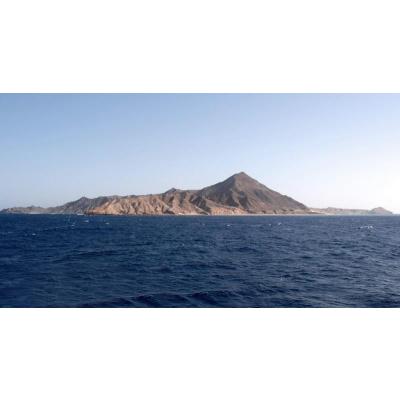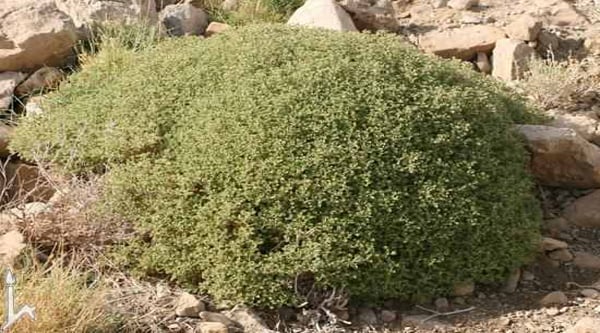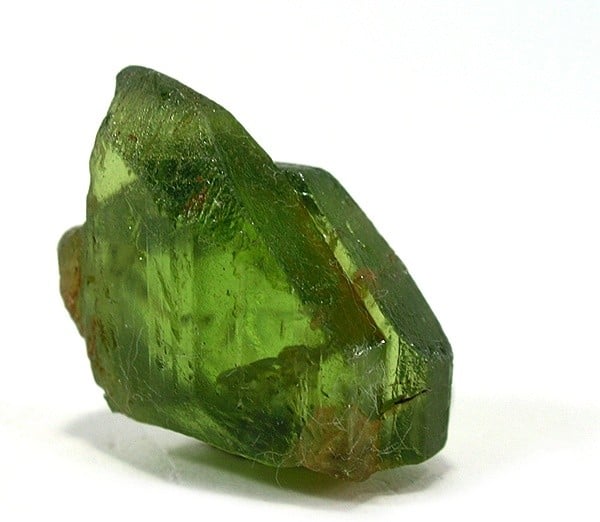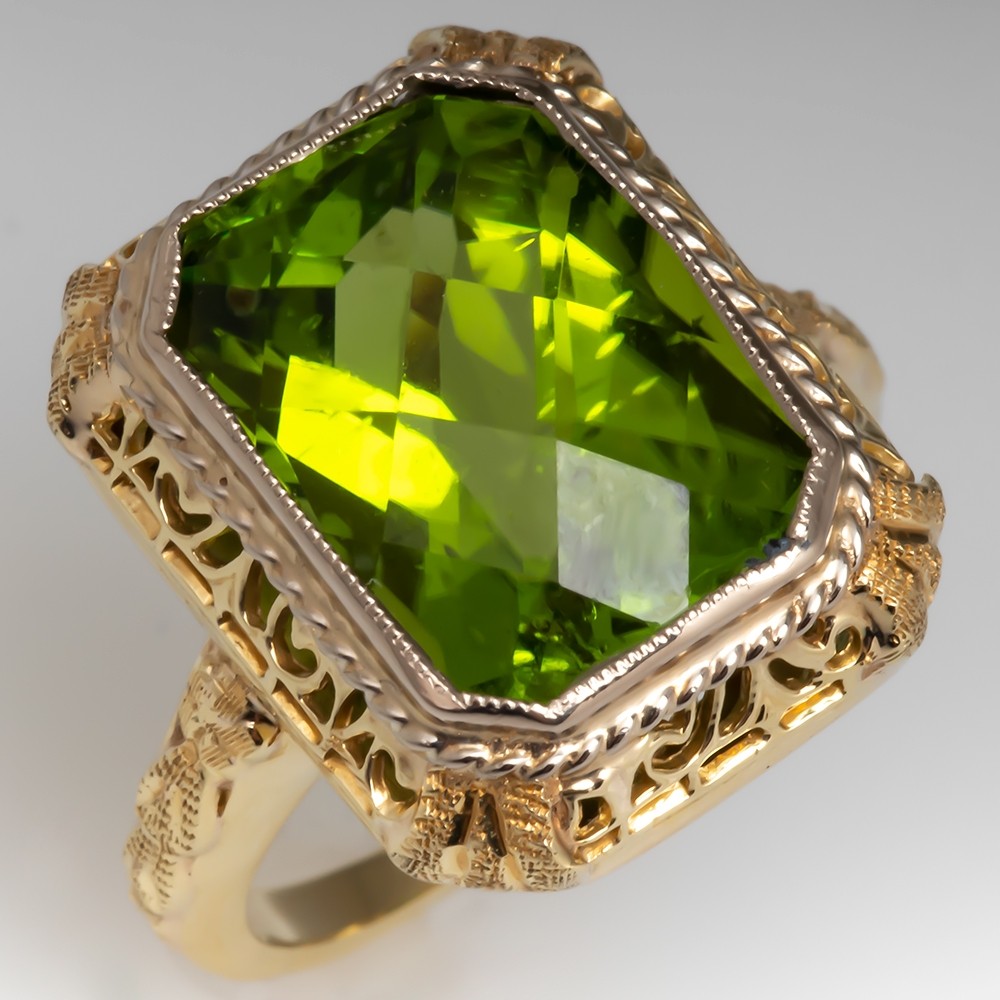
 Zabargad Island in the Red Sea. Photo from Wikimedia Commons. Zabargad Island lies in the Red Sea, just over 60 miles southeast of the Ras Banas Peninsula in Egypt. Its nearest neighbors are Rocky Island, four miles south of it, and St. John's Island, another 25 miles to the southwest. Interestingly enough, Zabargad was once referred to as St. John's Island, although not for long.
Zabargad Island in the Red Sea. Photo from Wikimedia Commons. Zabargad Island lies in the Red Sea, just over 60 miles southeast of the Ras Banas Peninsula in Egypt. Its nearest neighbors are Rocky Island, four miles south of it, and St. John's Island, another 25 miles to the southwest. Interestingly enough, Zabargad was once referred to as St. John's Island, although not for long.
The Mystique of Zabargad
The mystique of Zabargad lies in its important historical source of the world's most beautiful peridot specimens. As you will learn, many different groups of people have mined the gorgeous green gems from the island, only to suddenly, and seemingly mysteriously, abandon their pursuit. To this day, gem-quality peridot specimens remain easy to procure from the island. However, the entire island and its surrounding reefs are protected as part of the Elba National Park. Descriptions from modern tourism sites make it sound like a serene and beautiful outcropping of natural rock formations, which play host to marvelous sea creatures. And no doubt, it attracts its fair share of sea birds, fish, and octopi. (source) However, as far as humans go, Zabargad is extremely inhospitable.  Samwa plant. Likely the shrubs that grow on Zabargad Island. Photo credit: Sharma Club, Egypt.
Samwa plant. Likely the shrubs that grow on Zabargad Island. Photo credit: Sharma Club, Egypt.
A True Desert(ed) Island
The tallest "peak" on Zabargad Island rises a mere 770 feet into the air. With the majestic Cascade and Olympic mountain ranges as my native reference points, it's really just a hill. Peridot Hill, to be precise. The island hosts no trees. Instead, tufts of coastal groundcover (likely Samwa) grow in patches all over the ground. And that's about it. No available surface water, no electricity, no amenities. Nothing upon which humans could survive for long. (source) In contrast, the reefs surrounding almost the entire coastline boast an abundance of life, teeming with brilliantly colored sea creatures. However, they also prove an almost insurmountable obstacle for those attempting to reach shore. (source) It is for this reason that mining for peridot proved off-and-on-again so frequently throughout the island's history.  Zabargad Peridot. Photo credit: Wikimedia Commons.
Zabargad Peridot. Photo credit: Wikimedia Commons.
Mining for Peridot
In 2012, James Harrell described the mining ruins on the lower southeastern slope of Peridot Hill. Approximately 150 open pits dot the hill, as well as their accompanying tailings piles. (source) Ceramics litter the ground near an empty water well. A majority of the pottery found here dates back to the 250s BC. Some of it dates back to the ancient Romans. (source) This confirms the earliest written record of mining on Zabargad, around 250 BC. Pliny the Elder, writing in 70 AD, is the next scholar to write about the beautiful green gemstones found on the desert island. According to Pliny, pirates discovered the island and its gorgeous green stones as early as 500 BC. These initial finds made their way to Egypt as a gift to Queen Berenice. (source) The island's proximity to the ancient port city Berenike leads experts to believe that when the city prospered, the wealthy funded mining expeditions to Zabargad in search of what were then believed to be unique specimens of emerald. When funding dwindled, the miners abandoned the inhospitable island in search of better work elsewhere. With the fall of Berenike in the 6th century, the island and its beautiful green gems lay mostly undisturbed until the late 10th century. 
Modern Mining on Zabargad
At that time, the Fatmid conquered Egypt and set up Aydhab as a center for trade. In 970 AD, the Turkish traveler Ibn Hawqal describes a green gemstone called zabragad, which was mined on an island near the port city. Likely Zabargad peridots. (source) This is the last account of peridot from Zabargad until 1769, when James Bruce visited the Red Sea islands and described green gemstones likely mined by the native Beja tribes. (source) In 1838, James Wellested confirmed the link between the green gems of Zabargad and the green stones described by Pliny the Elder. From the time of Berenike's fall to Wellested's account, the ancient mining operations remained abandoned. Modern mining on the island began in 1906, under the direction of the viceroy of Turkey. Operations continued sporadically until 1958, when the president of Egypt nationalized the region. The island now belongs to the Elba National Park system. Though its easy enough to pick up a peridot or two, even from the tailings piles, most people go to Zabargad Island to dive and explore the reefs. ~Angela Magnotti Andrews
